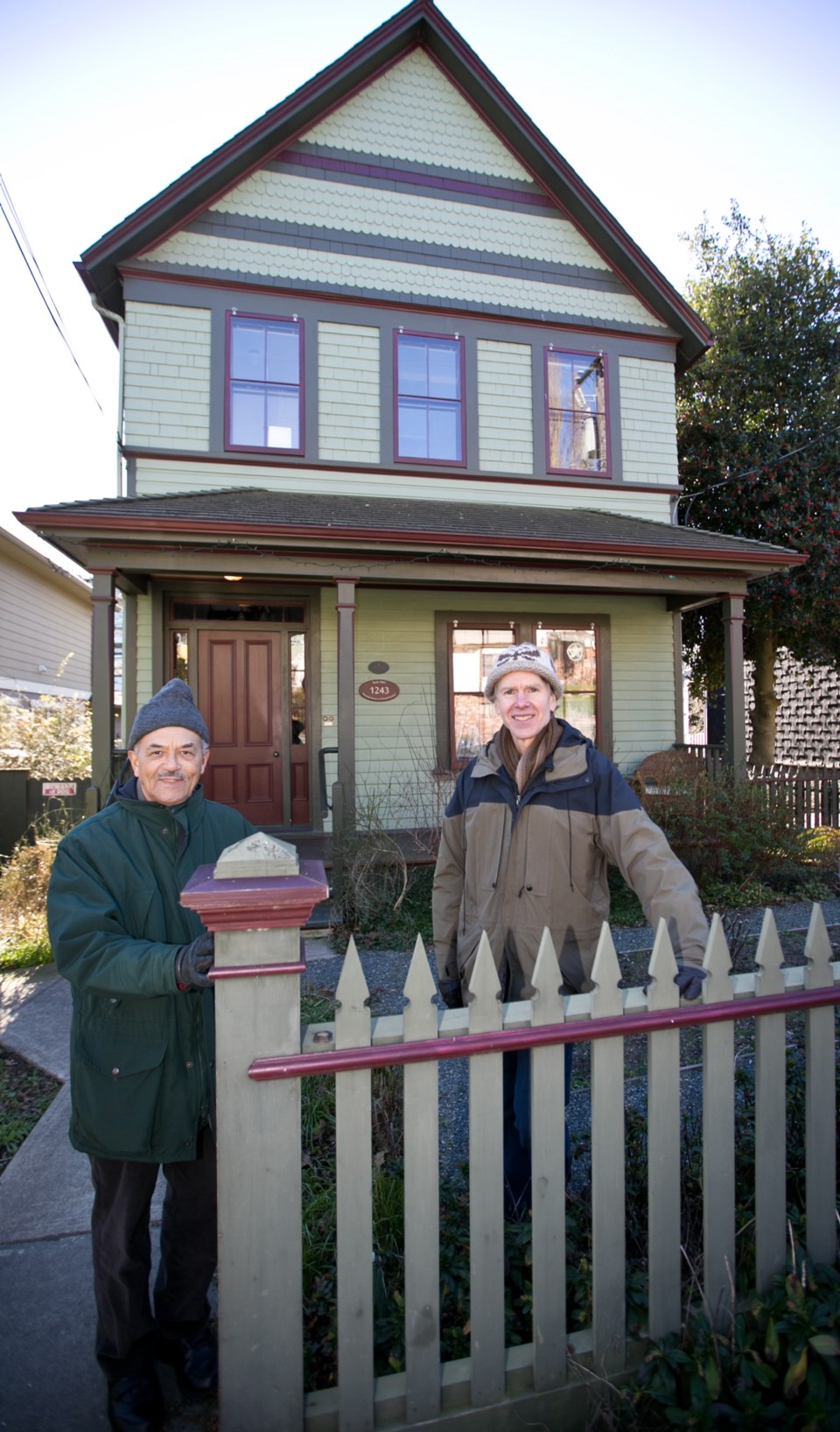A historic Victoria house, built 152 years ago by an African-American pioneer, will be commemorated with a plaque in recognition of Black History Month in B.C.
On Sunday, a plaque will be unveiled at 1243 Rudlin St., a house originally completed in 1862 as a home for black pioneers John Dandridge and his wife, Charlotte.
Valin Marshall, a retired professor and a member of the B.C. Black History Awareness Society, said the Dandridges and their daughter Sydna were part of a contingent of Afro-American pioneers who came from California in the late 1850s and early 1860s.
Marshall said these pioneers were coaxed to Victoria by then-Vancouver Island governor Sir James Douglas, who was growing fearful of American expansion. Douglas, whose mother was Creole, was looking for settlers who would be willing to resist U.S. intrusion, so he reached out to African-Americans, still facing slavery in the Southern states.
“Douglas wanted people who would become citizens, good British subjects, who would protect the Canadian territory,” Marshall said in an interview.
But he said the people who came here were not runaway slaves. Former slaves accounted for only a handful of about 800 African-American families.
“Most of the people who came to Victoria were already pretty well off,” said Marshall. “These were people who were businessmen or farmers, people who would contribute to the society in Victoria.”
The Dandridges were typical of the people who came to Victoria in that wave.
Some records list John as a labourer, while others list him as a waiter. Whatever he did in Victoria, it was enough for him to have the house erected for his family.
Victoria carpenter Davyd McMinn, who specializes in restoring heritage homes, bought the house 11 years ago. McMinn said he was looking for a home with historic interest and one he could rent out.
“When we first saw the house it had been completely covered with stucco,” McMinn said. “They had run over everything without taking off the mouldings, so we could see there was certain detail behind.”
Researching the property, he found the house was moved in 1897 to Rudlin Street, then part of Pandora Avenue. Its original location was at the corner of Johnson and Vancouver streets, now occupied by McCall Bros. funeral directors.
In 1897 the house was bought by J.F. Todd, owner of Todd Fish Packer, later B.C. Packers, who sold the structure to have it moved off the property.
Checking the Victoria archives, McMinn came upon the name of the original owner — John Dandridge.
McMinn said he has always been a bit of a history buff, but he had never heard the story of African-American pioneers to Victoria and was immediately captivated.
“It’s such a wonderful human story,” McMinn said.
With help from Marshall at the B.C. Black History Awareness Society, it was learned Dandridge was born in 1802 and Charlotte in 1795 in Virginia, then a slave state, although neither appears to have ever been slaves.
Later, the two lived in Buffalo, N.Y., where John was a member of the Michigan Street Baptist Church, believed to have been a way station on the Underground Railway, ferrying slaves escaping to Canada.
It appears the two moved to California before coming to Victoria with their daughter. In Victoria, daughter Sydna married Abner Hunt Francis, a grocer in Portland, Ore., who became a grocer in Victoria.
Abner also joined a local militia regiment, the Victoria Pioneer Rifles or the Victoria African Volunteers. They were organized as a possible defensive force against American expansion.
Charlotte died in 1863 and is buried in Pioneer Square. Abner died in 1870 and is also buried there.
John Dandridge disappears from official records after 1872. It’s speculated he may have returned to the U.S. after the end of the American Civil War, in 1865.
Sydna stayed behind and was a member of the First Presbyterian Church at Fisgard and Quadra streets, now the First Metropolitan United Church. She died in 1889 and is buried in Ross Bay Cemetery.
“She was a stalwart member of the church,” McMinn said. “And when she died, she left her entire estate to the church and I think they may have used that estate to do renovations to the building.”
For more information on Black History Month, go to bcblackhistory.ca.
UPCOMING EVENTS
Some events during B.C. Black History Month
Folk singer Leon Bibb. Friday, 7 p.m., Government House, 1401 Rockland Ave. Advance tickets only. Available from ticketrocket.org or at Ivy’s Bookshop, 2188 Oak Bay Ave.
Speaker: RCMP Sgt. Craig Smith, author of You Better be White by Six a.m.: The African- Canadian Experience in the RCMP. Feb. 16, 2:30 pm., James Bay New Horizons Centre, 234 Menzies St.
Ross Bay Cemetery Tour. Feb. 23, 2 p.m. Meet rain or shine at Oregano’s, Fairfield Village, 1-1516 Fairfield Rd.
Jazz, blues and spoken word with the Maureen Washington Quartet. Feb, 24. 7 p.m., Belfry Theatre, 1291 Gladstone Ave. Phone 250-385-6815 for ticket information.
For more events and information, go to bcblackhistory.ca.
